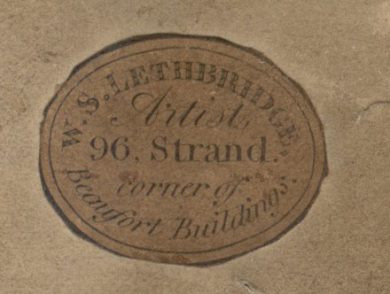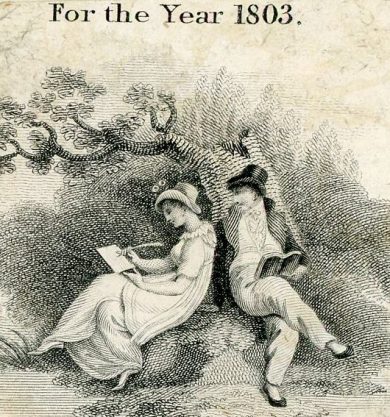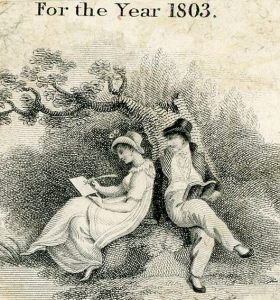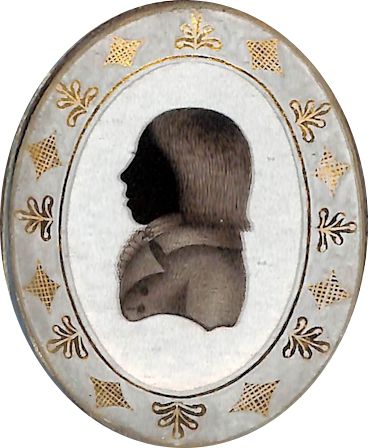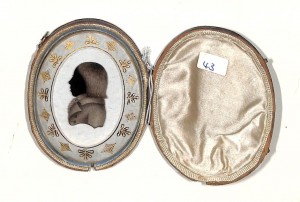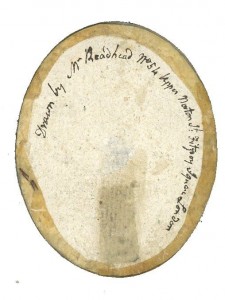Disputed Likenesses
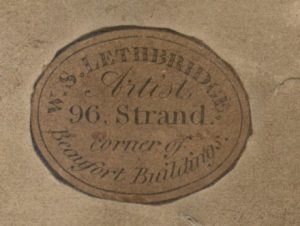 A curious dispute over two portrait miniatures was brought before a London magistrate in June 1824 and subsequently reported in the newspapers. Mr Jones of Stoke Newington was charged with riotous behaviour against the miniature painter Walter Stephens Lethbridge, then residing above a baker’s shop in the Strand.
A curious dispute over two portrait miniatures was brought before a London magistrate in June 1824 and subsequently reported in the newspapers. Mr Jones of Stoke Newington was charged with riotous behaviour against the miniature painter Walter Stephens Lethbridge, then residing above a baker’s shop in the Strand.
The story goes that Lethbridge had been commissioned by an elderly maiden lady to paint two likenesses of her for an agreed fee of £11. Before the portraits were completed, the 78-year-old lady, ‘as rich as she was venerable’, met 40-year-old Mr Jones, fell in love and married him. Upon completion, the portraits were duly sent to the lady but, despite numerous requests, the artist’s bill was not paid. Mr Jones meantime claimed that the portraits were not good likenesses and so were ‘not liked’. Lethbridge stated he was willing to alter them as he did not wish the lady to ‘lend her grace to the grave, and leave the world no copy’. But the miniatures were not returned to him so, running out of patience and needing the money, Lethbridge issued a writ.
On the day in question, Mrs Lethbridge had just learned from her doctor that she had breast cancer so no doubts tensions were already running high in the Lethbridge house when Mr Jones burst in and accused the artist of being an ‘infamous scoundrel’ and a blackguard. A war of words broke out with Lethbridge accusing Mr Jones of ‘fortune-hunting’ in Margate. Jones then claimed that Mrs Lethbridge punched him in the chest whereupon he threw open a window and yelled ‘Murder’! A neighbour rushed in closely followed by a constable who brought both men before a magistrate.
Having listened to both men’s accounts, the magistrate expressed surprise that a man of Jones’s ‘personal capacities’ should accuse a sick woman of assault and bailed him £40 to keep the peace. Not prepared for such an outcome and so not having enough funds on him, Jones was taken into custody until his new wife came his rescue later that evening. One hopes that Lethbridge was then also paid in full for the portrait miniatures.
